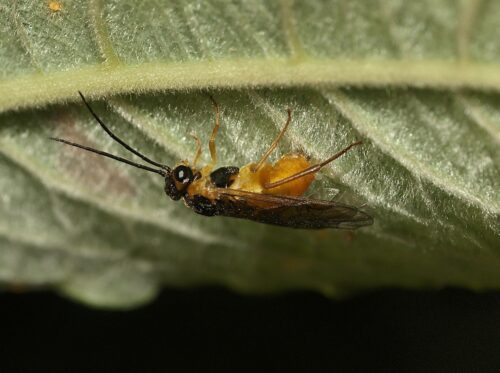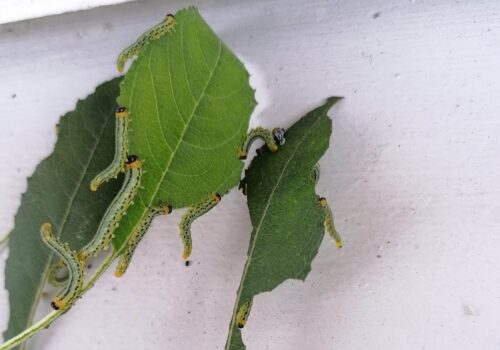Wil

Wil
The female uses her “ovipositor” (a saw-like device from which the common name “sawfly” is derived) to pierce a leaf and lay 50 to 80 soft yellow eggs on it. From the eggs hatch small, bright green larvae with large black heads. These grow into fresh green/yellow larvae with distinctive stripes. The larvae from the eggs look like caterpillars but are not. Larvae of the wil
The larvae feed on leaves and then enter the soil to pupate, from which the adult sawflies emerge. Two or three generations may be produced each year.
Sawflies sometimes become a pest and can then completely defoliate a tree.
Sawflies are most common on wil
Wil
Where to find
- Willow
- European aspen (Populus tremula)
Control
A single branch with eaten leaves can be cut away and destroyed (not in the compost heap).
Commercially available are roundworms – the natural enemies of the wil
Prevention
Sawflies hibernate in the soil; turn over the soil around the willows in winter. This brings the sawflies to the surface and freezes them to death.

